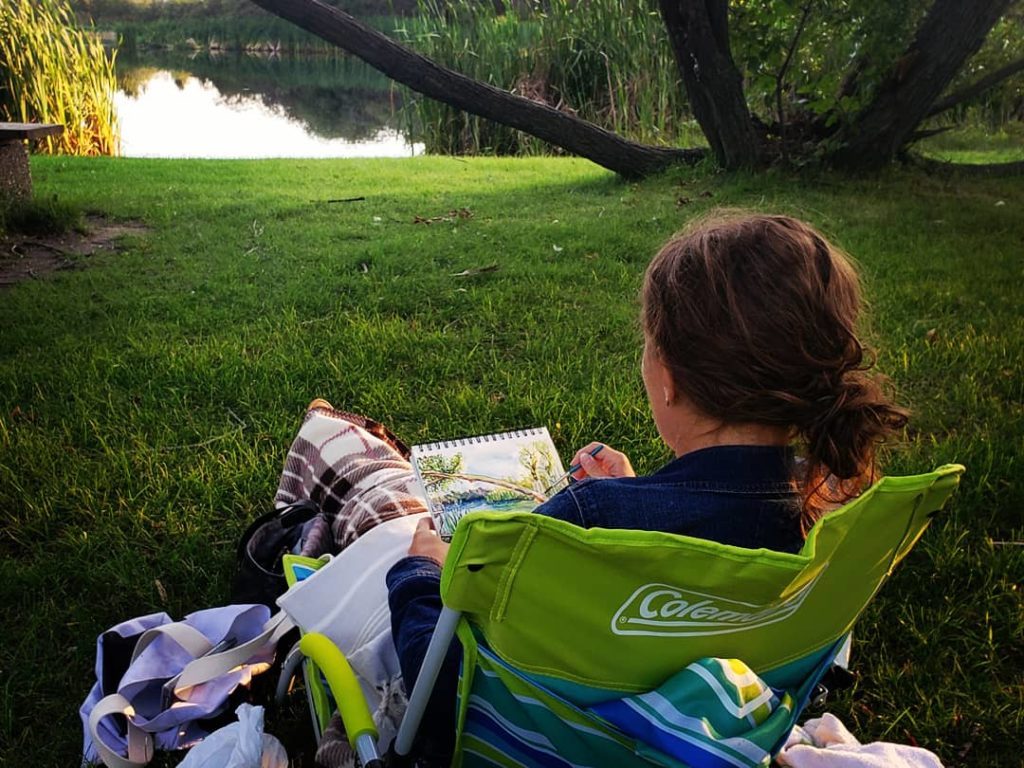Nature Journals are not just for Scientists
What is a Nature Journal?
DOWNLOAD YOUR FREE NATURE JOURNAL NOTEBOOK HERE
A nature journal is a dedicated notebook which includes information, notes, thoughts, observations and even sketches of one’s natural environment. Nature journals were the original way scientists kept notes while in the field. Early scientists relied on their note taking and sketching skills to to accurately document their explorations. Naturalists and biologists still keep journals which include important information about the objects they are studying – whether it be a bird, a habitat, a pond, a nest site, etc.

Charles Mash Maplestone Field Journal Entry from Museums Victoria Collection
Why not just take a picture?
Unlike a digital photograph, nature journal entries should include location, date, time, notes about your observations (was the animal moving, was the ground wet, were there birds singing, etc). They can also include sketches and weather details, such as temperature, humidity, wind information. A good scientist also writes down their questions and thoughts.
What are the benefits of keeping a nature journal if you’re not a scientist?
- Documenting what you see, hear, feel and smell builds your observation skills.
- Allows kids (and adults) to slow down, relax and focus.
- Encourages kids to use sight, smell, touch and listening skills.
- Creates a connection to our natural environment.
- Provides an outlet for creative and artistic expression.

Crystal Driedger’s July 15/2019 Nature Journal Entry.
For Parents
Have your child choose a location and a subject that inspires them (backyard, leaves, garden plants, forest trail, out a window, at a lake, pond, etc).
Before they begin their first entry, they should get comfortable and set out their supplies so that they can access them easily.
Have your child ask themselves the following questions before they start taking notes or sketching:
- What do I really see?
- How do I describe the texture?
- Is there a particular smell I want to record?
- Are there birds nearby?
- How many colours do I see?
- How do I describe today’s weather?
- How does what I see make me feel?
If your child is including sketches in their journal entry, suggest that they draw what they see without looking at the page too much. That really works those observation skills! If they don’t like to sketch, they can take a photo while on site, then print it and glue it into their journal page when they get home. Make sure that they mark down the date, time, location and their name on the page.

Getting comfortable and working on observation skills
Nature Journal Supplies List
- pencils and eraser
- pen (fine tip waterproof)
- watercolor paints, crayons or felt markers (waterproof)
- dedicated notebook (lined or unlined)
- paintbrushes (optional)
Nature journal entries can be as simple or as complex as you like. Try to make an effort to make a weekly entry.
Crystal Driedger, Artist and Nature Journalist, offers the following advice “Sometimes I just collect specimens to draw from at home which is a good tip for when it’s really cold out and you don’t want to sit in the snow to draw nature. Also, you can “ink” a drawing in the field and then paint it in at a later date. Sometimes I paint in the car while Greg drives during a long road trip.”

Crystal Driedger’s On Site Nature Journal Entry (Sketch)

Crystal Driedger finishing her nature journal entry in the car on the way home.
Michelle Schwengler, Artist and Nature Journalist (Free Bird Illustrations) finds inspiration for her journal entries while paddling her kayak.
How will you find your inspiration in nature? Try Nature Journaling and find out!

Journal Entry by Michelle Schwengler

Nature Journaling while kayaking. Michelle Schwengler



